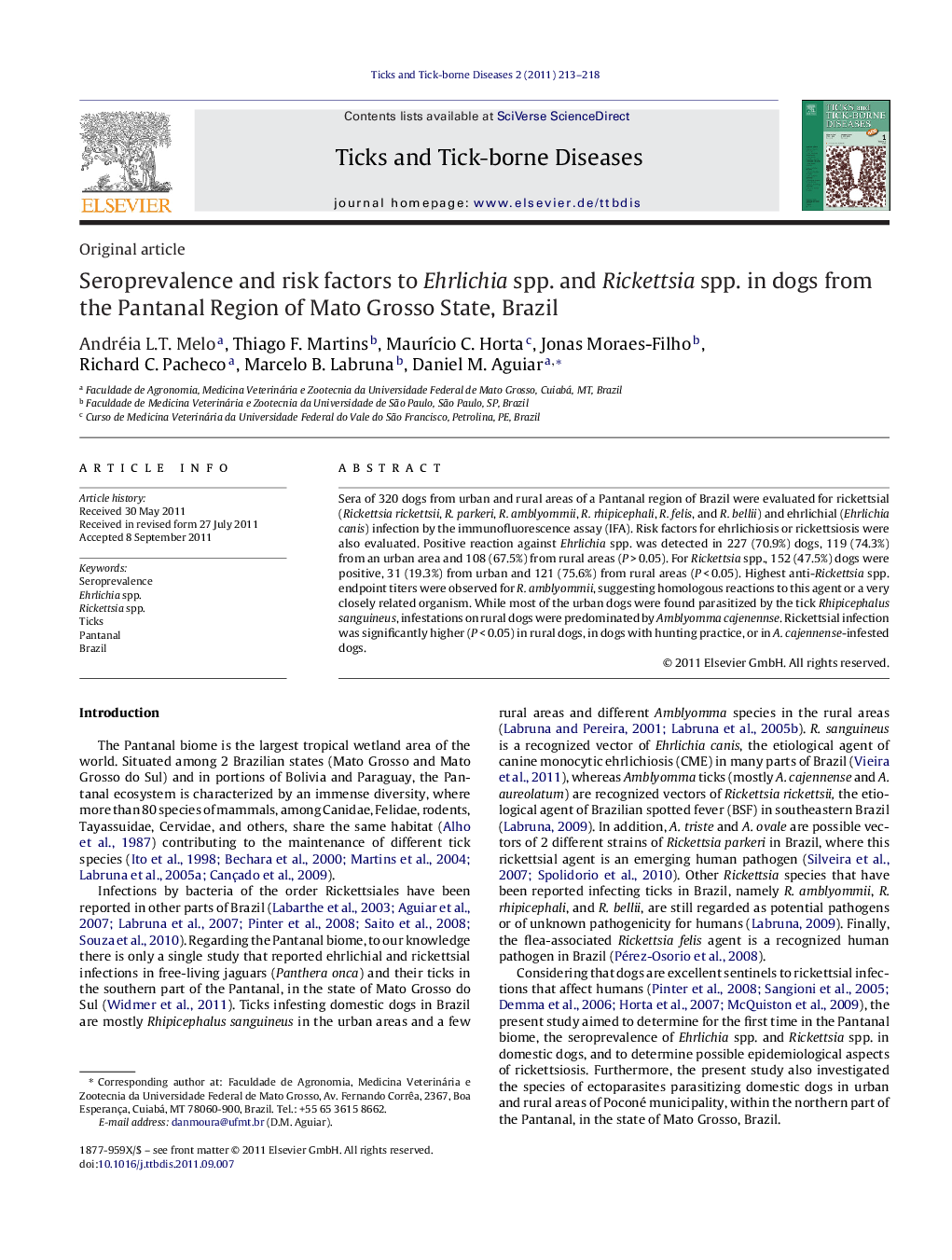| Article ID | Journal | Published Year | Pages | File Type |
|---|---|---|---|---|
| 2474295 | Ticks and Tick-borne Diseases | 2011 | 6 Pages |
Sera of 320 dogs from urban and rural areas of a Pantanal region of Brazil were evaluated for rickettsial (Rickettsia rickettsii, R. parkeri, R. amblyommii, R. rhipicephali, R. felis, and R. bellii) and ehrlichial (Ehrlichia canis) infection by the immunofluorescence assay (IFA). Risk factors for ehrlichiosis or rickettsiosis were also evaluated. Positive reaction against Ehrlichia spp. was detected in 227 (70.9%) dogs, 119 (74.3%) from an urban area and 108 (67.5%) from rural areas (P > 0.05). For Rickettsia spp., 152 (47.5%) dogs were positive, 31 (19.3%) from urban and 121 (75.6%) from rural areas (P < 0.05). Highest anti-Rickettsia spp. endpoint titers were observed for R. amblyommii, suggesting homologous reactions to this agent or a very closely related organism. While most of the urban dogs were found parasitized by the tick Rhipicephalus sanguineus, infestations on rural dogs were predominated by Amblyomma cajenennse. Rickettsial infection was significantly higher (P < 0.05) in rural dogs, in dogs with hunting practice, or in A. cajennense-infested dogs.
